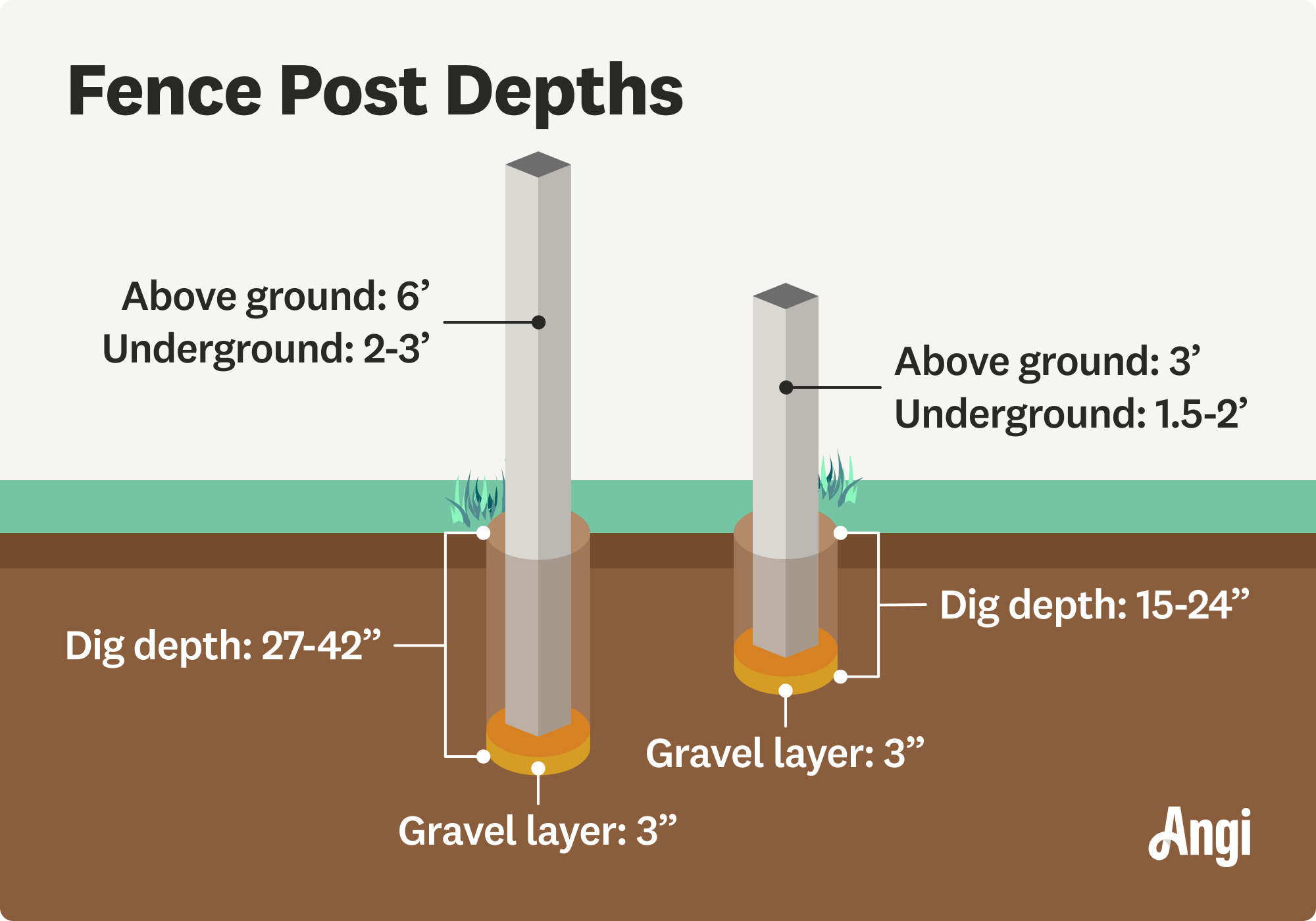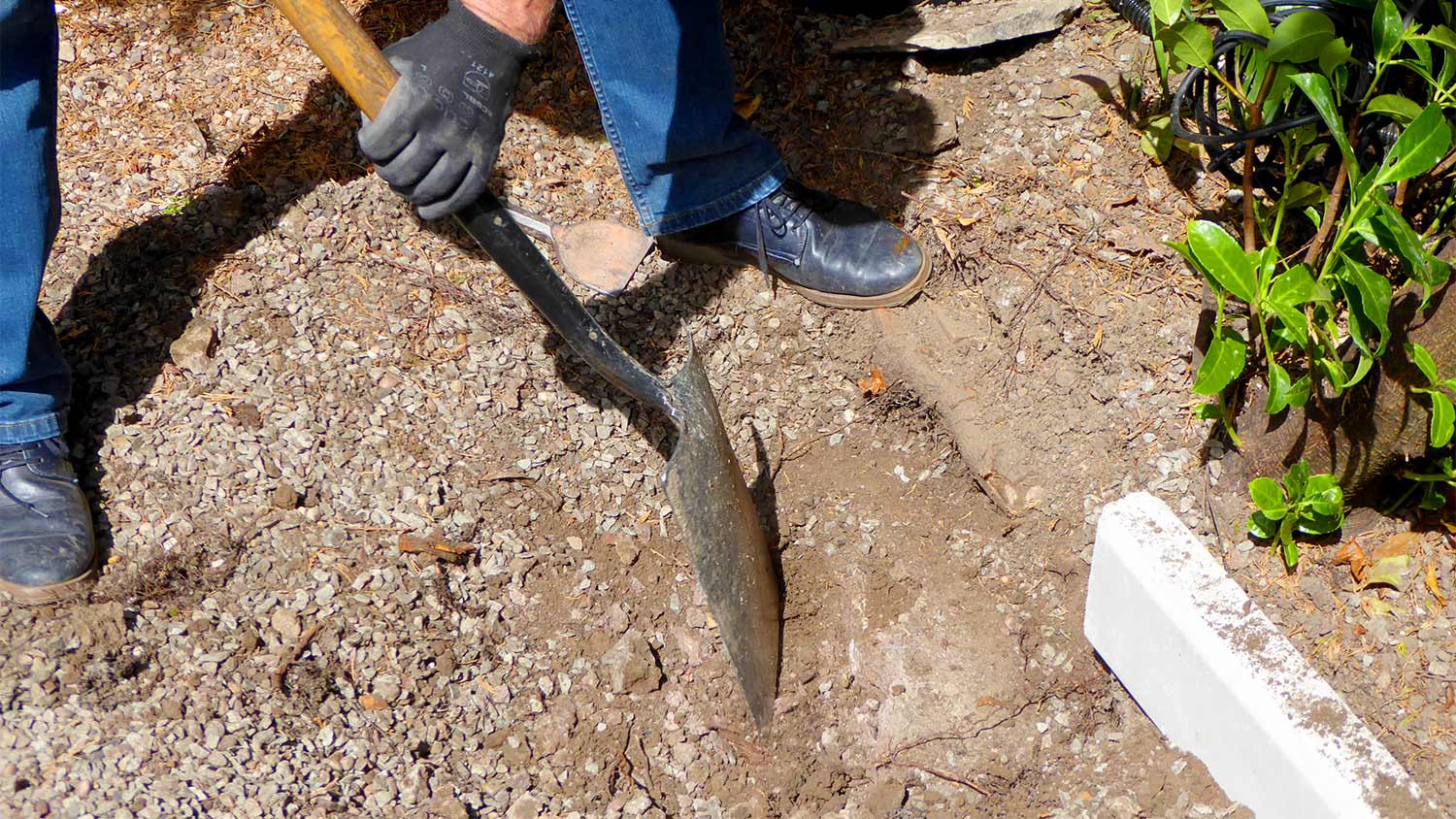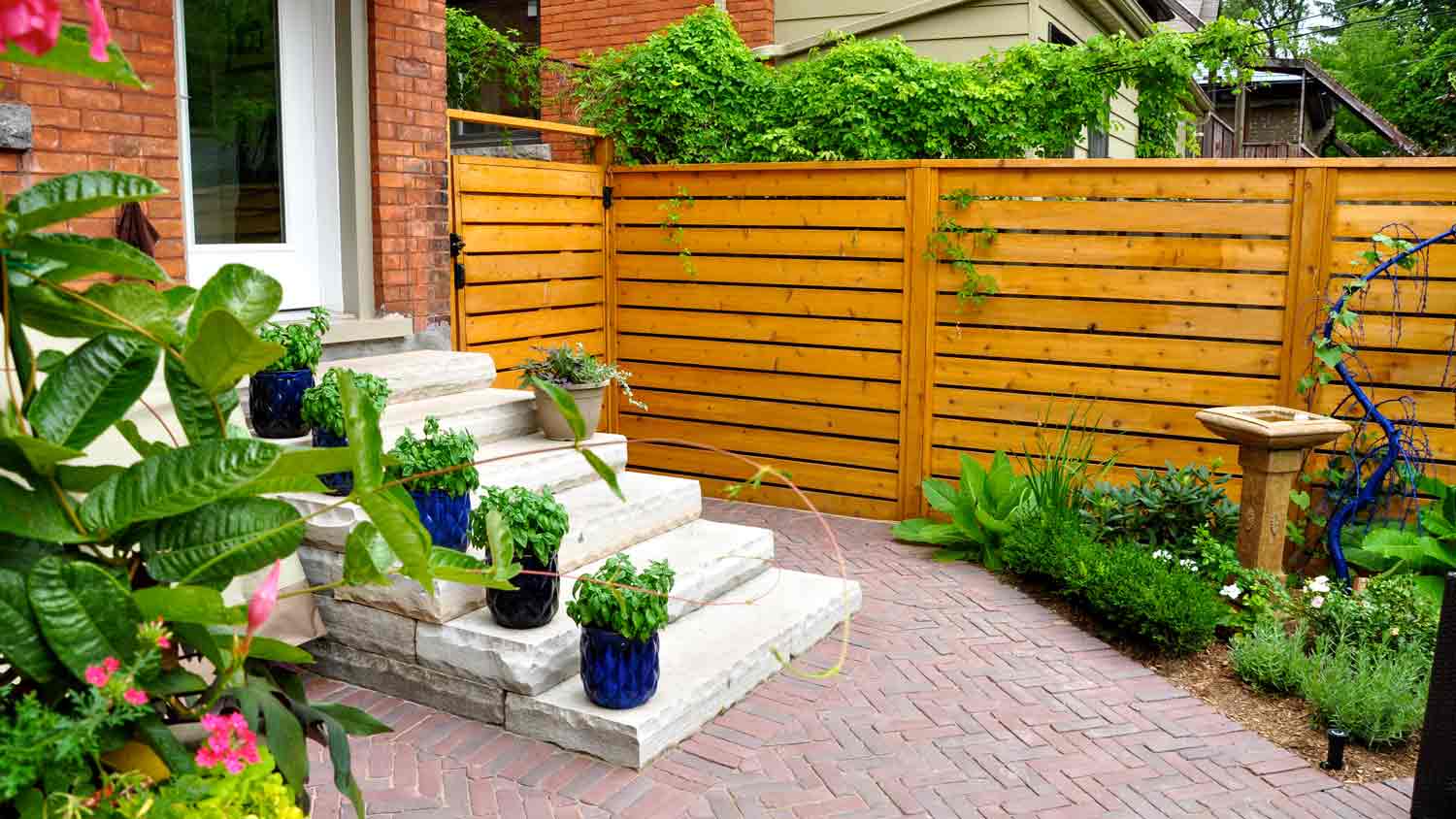
A new fence adds privacy, improves safety, and even boosts curb appeal. But how much does fence installation cost? Find out in this guide.
Finding the ideal fence post depth takes a little digging—literally


Set your fence posts deep enough to bury one-third to one-half of the aboveground height of the post.
The hole for the footing should be three times the diameter of the post.
You’ll need to dig deeper if you have unstable soil, windy weather, or you’re setting a gate post.
Your fence post hole should be a uniform width throughout, so use a power auger.
Your fence post should be buried at 1/3 to 1/2 of the height above the ground. For example, if you’re building a 6-foot fence, the underground portion of your post needs to be 2 to 3 feet. Meanwhile, the footing hole should be three times the post diameter. To keep the post hole sizes consistent, use a power auger for the digging. If you have loose soil, live in a windy climate, or need to set a gate post, you’d want to dig even deeper.

Whether you're installing a picket or panel fence post, dig your hole deep enough to accommodate one-third to one-half of the aboveground height of your fence plus 3 to 6 inches of gravel. For example, a 6-foot-tall fence should have posts buried at least 24 inches deep, plus an extra 3 inches for gravel. Here are some basic guidelines.
| Fence Height (Aboveground in Feet) | Post Hole Depth (Inches) |
|---|---|
| 3 | 15–24 |
| 4 | 19–30 |
| 5 | 23–36 |
| 6 | 27–42 |
| 7 | 31–48 |
| 8 | 35–54 |
The width—or diameter—of your post hole should be three times the diameter of your post. Standard post diameter varies based on the type of fence, so you’ll need to measure, but here are some common sizes.
| Size of Pole | Post Hole Diameter (Inches) |
|---|---|
| 2-3/8-inch round pole | 7.2 |
| 4x4-inch square pole | 12 |
| 6x6-inch square pole | 18 |
Gate posts require more stability because they have to handle the weight and movement of the gate. Dig your gate post holes deep enough to accommodate one-half of the aboveground height of your fence, plus a 6-inch layer of gravel.
| Fence Height (Aboveground in Feet) | Post Hole Depth (Inches) |
|---|---|
| 3 | 24 |
| 4 | 30 |
| 5 | 36 |
| 6 | 42 |
| 7 | 48 |
| 8 | 54 |
Fence gates are heavy and cumbersome to install. It’s all too easy to make a small mistake and ruin the integrity of your fence during a DIY installation. Hire a fencing pro to ensure a sturdy installation done right.

If you live in an area that experiences freezing temperatures, your fence will be the most stable if you position the posts below the frost line. The frost line is the depth at which groundwater freezes in the soil. The type of soil around your home, its moisture content, and average temperatures in your area all contribute to the frost line.
When you install fence posts above the frost line, the fence can be unstable due to the freezing and thaw of water in the soil. As water freezes, it expands. As it thaws, it contracts, potentially pushing the posts out of the soil.
Your local fence code will most likely contain information about the required fence post depth to avoid frost damage. If it doesn't, and freezes occur in your area, a safe bet is to set the posts at least 24 inches deep.
Finding the fence post depth takes a little basic math. You’ll need a calculator and some measuring tape. These tips can help:
Measure the height of your post, then divide the total height by two or three to get a general depth.
Burying half the pole is the sturdiest option. It’s ideal for gate posts, fences made from heavier materials, loamy or clay soil, and climates with high winds.
You can get away with burying a third of the pole if it’s a lightweight panel post and you have a sturdy soil type like sand, sandy loam, or gravel.
Don’t forget to add 3 to 6 inches to your measurement for a layer of gravel. The more gravel, the better the drainage. This is especially important for wood posts, which can rot in moisture.
Choose the right size nails for your fence pickets to prevent them from coming loose or splitting during installation. You’ll want 8d to 10d nails for setting pickets and 18d to 20d for posts.
If you don't have experience, you should enlist a fence company near you.

A properly installed fence post will last for several years, if not decades. Along with digging deeply enough and making the post hole the appropriate size, there are a few ways to fill the hole to increase stability.
Add soil and gravel: Add 3 inches of gravel to the fence post hole to improve drainage, top the gravel with soil, and tamp it all down. Add 2 to 3 inches of gravel over the soil, then let it sit for several days. Tamp it down again before installing the pickets.
Pour in concrete: Mix the concrete according to instructions and pour it into the post hole. To prevent water damage, apply silicone caulk between the post and concrete after the concrete dries.
Apply expanding foam: Foam and concrete similarly help stabilize a fence post, but foam takes less time to set and cure. This option is best for lighter fences, such as those made from vinyl or mesh. Mix and apply the foam according to the package’s directions.
It's pretty easy to tell if a fence post isn't buried deeply enough. The post may be loose and easily moved. It may also start to lean, pulling the rest of the fence with it. Also, the bottom of your post needs to be set below the frost line. Otherwise, you will get frost heave over time and your post will eventually get pushed out of the ground after a frost due to soil contraption and movement.
You can reset a fence post if it wasn't installed correctly the first time. If the post was installed to the correct depth, you can fix any leaning or wobbliness by adding more soil around the post.
Another option is to dig out around the posts and pour concrete into the hole to create a stronger base. If the posts are rotted or otherwise damaged, your best option may be to pull them up and replace them.
Fence installation is not the most difficult DIY project, especially if you can find an experienced helper and live in an area that does not require a fencing permit. Typically, it’s a two-to-three-day job to build a fence, including any time you might need for post footings to set depending on the material. You can also install a no dig fence by yourself fairly easily.
However, we still recommend you to hire a pro if you’re building a taller privacy fence, or simply don’t want to deal with the time and labor. An experienced fence contractor ensures your new fence is properly installed and can handle all utility marking and permitting requirements. Generally, professional fence installation costs $1,856 to $4,750.
Chris is the man. On time and cleans up behind himself. We hired him to replace a vinyl fence closer latch and a few minor in home things. Definitely will call him for future projects. Thanks Chris
DanDale was very helpful and answered all of our questions throughout the process! Once the final product was installed, I even asked the team to adjust placement of the fence, and they obliged with no complaint saying they want their customers happy!
Love my new fence!!! Love the communication and the options that were provided to me. Saul, the project manager was awesome making sure the measurements were correct and when the installation could be completed.
It was a pleasure doing business with Top Rail. Mr. Stewart is very nice. He quoted me a great price to replaced and installed 22ft of fence. The work was schedule on time and was finish the same day. The fence looks great.
Timely response; good communication,. Immediate understanding of repair project. good at trouble shooting; good quality work; Leo made recommendations to stabilize the fence . energetic, good cleanup of work site Courteous, prompt.
The General Manager Paul kept me updated on the status and start date. The crew was prompt and courteous. They reviewed with me exactly where fence line would run and where I wanted the gates. These guys did a great job, cleaned up well and set aside the old fence which was in the way of new...
The installation team was knowledgeable and professional. Stephen & Tyler W.
We had about 8 companies come out and give us a quote for our yard. Dubon was by far the most fair. There were no hidden costs, no upselling, just straightforward, honest hardworking. The fence went up as scheduled and completed on time. The fence looks great! We are so happy with the...
The fence we had installed was a wire and wood fence of a bit less than half of our 1.17 acre property. The fence turned out beautifully and our two pups love their new dog park! It is roomy enough for them to have their friends over to play! The fence was installed in two days, as promised....
The fence consultant, Bill Winters, arrived on time and walked the yard, sketching and measuring the dimensions as he went. They offered at least three different types of pickets and I chose the "Gothic" which is a pointed picket with softly rounded edges. It was hard to wait until the day...
From average costs to expert advice, get all the answers you need to get your job done.

A new fence adds privacy, improves safety, and even boosts curb appeal. But how much does fence installation cost? Find out in this guide.

How much a privacy fence costs depends on several factors, including the size of the fence and the material used. Our cost guide breaks down these and other factors.

Get a clear estimate of wood fence repair costs. Learn what impacts price, compare repair types, and find tips to save on your next fence project.

If you're wondering about the differences between a cedar vs. redwood fence, you’re in the right place. Our guide explores the pros, cons, and costs of both.

Ready to restore privacy to your yard using a few tools and a little elbow grease? Here’s how to repair a chain link fence in eight simple steps.

There are many gate latch types available. This guide breaks them down to help you choose the best latch for your gate type, use, and look.